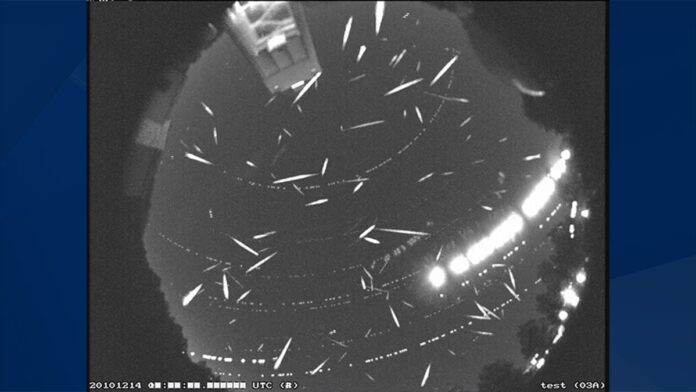Thursday is the peak of the annual meteor shower known as Geminids, considered to be one of the best and most reliable meteor showers.
Geminids shower peaks during mid-December each year.
According to NASA, viewers can spot up to 120 meteors per hour during the peak activity.
The active dates to see these meteors is from Nov.19 to Dec. 24. It’s peak will be Dec. 14.

Over 100 meteors are recorded in this composite image taken during the peak of the Geminid meteor shower in 2014.
Credit: NASA/MSFC/Danielle Moser, NASA’s Meteoroid Environment Office
The Geminids are best viewed during the night and predawn hours. The shower starts around 9 or 10 p.m.
How to view them?
To view the Geminids, find an area away from the city lights or street lights, as well as somewhere with no rain conditions.
Prepare yourself for some chilly nights. Bring a sleeping bag, blanket, or lawn chair.
Lie flat looking up to the sky, after about 30 minutes in the dark, your eyes will adapt and you will begin to see meteors.
The NBC 2 Weather Team is forecasting cloudy conditions during the peak of the Geminids this week so unfortunately, visibility will be poor in our area. A front stalled to our south will lift north and conditions will deteriorate toward the end of the week increasing cloud cover and rain chances.



